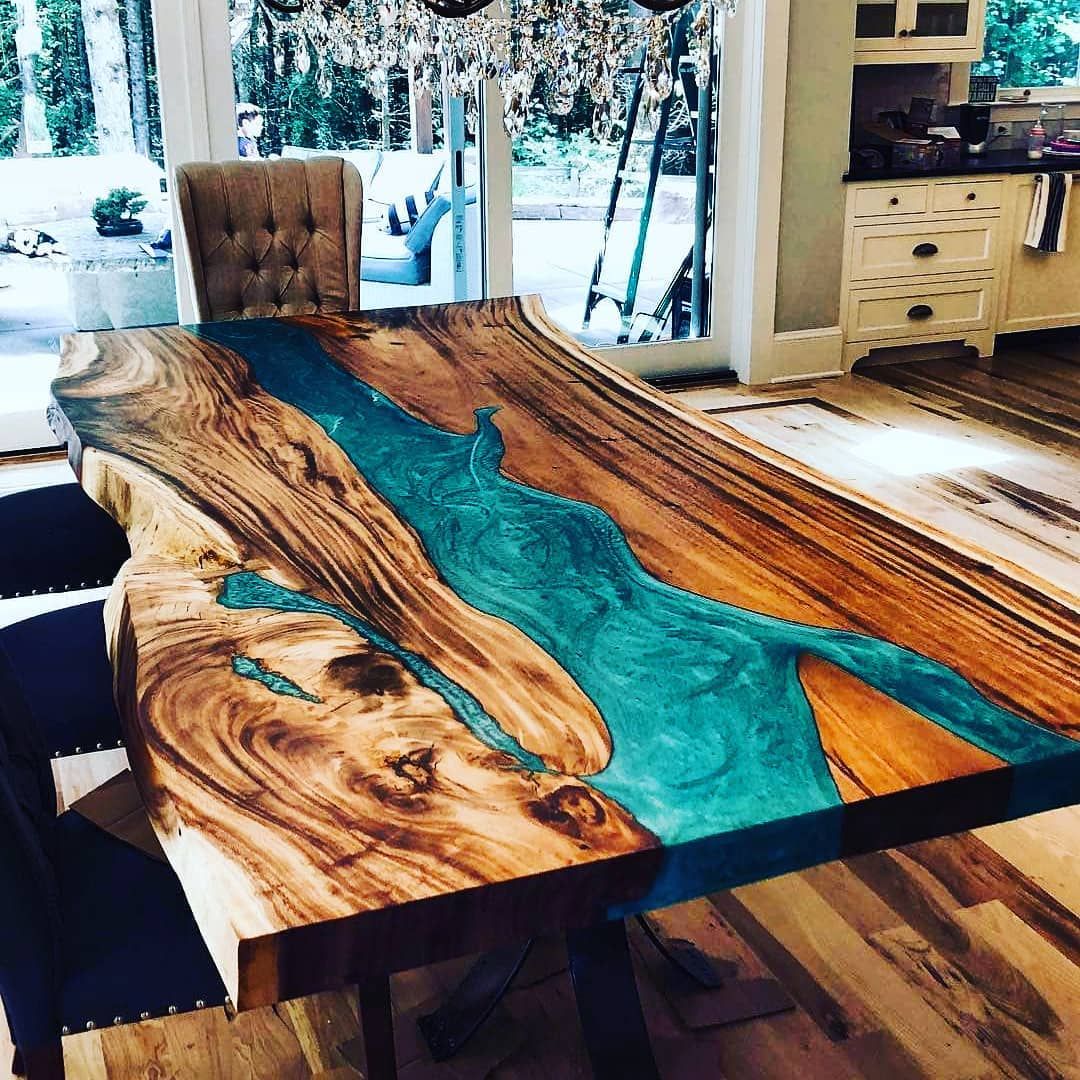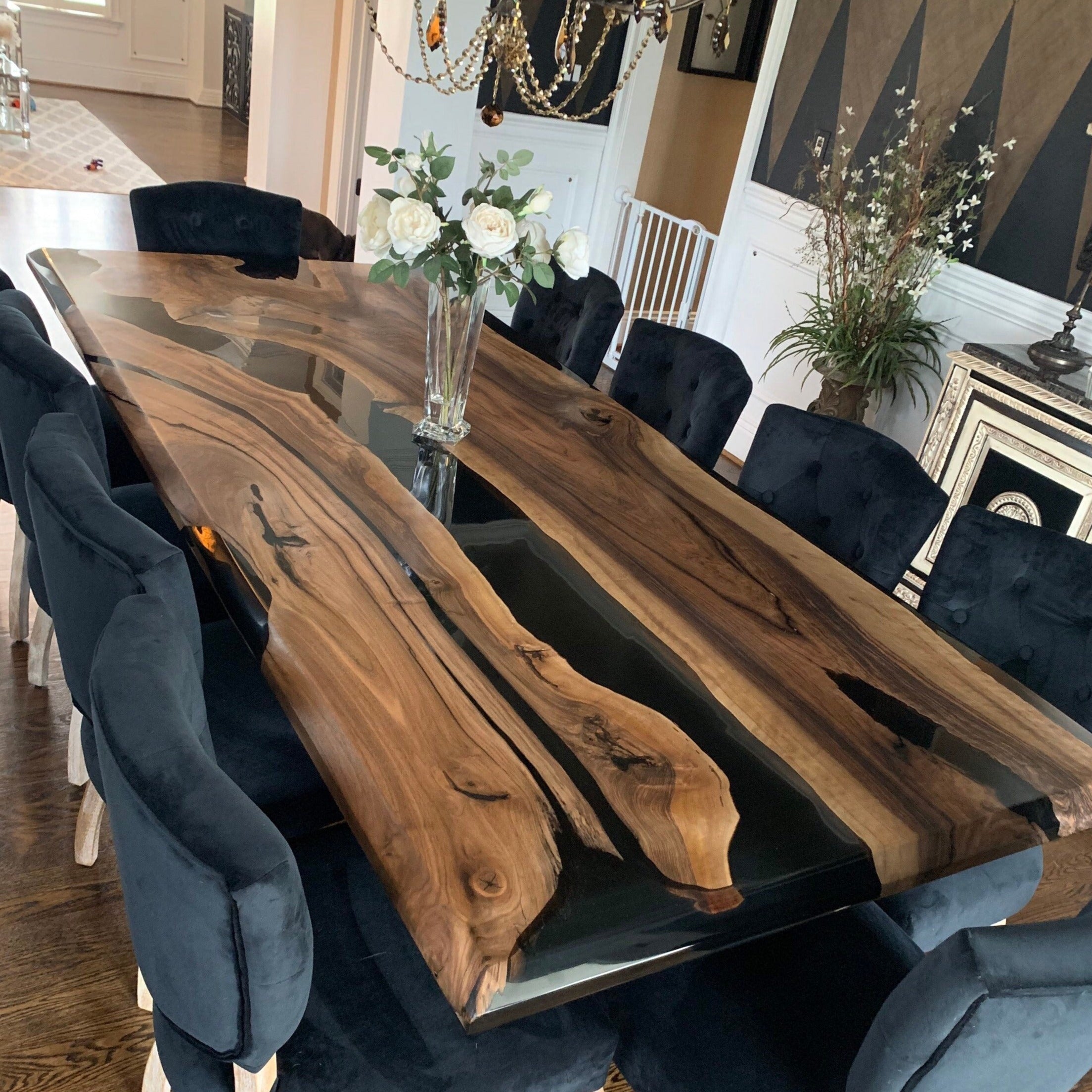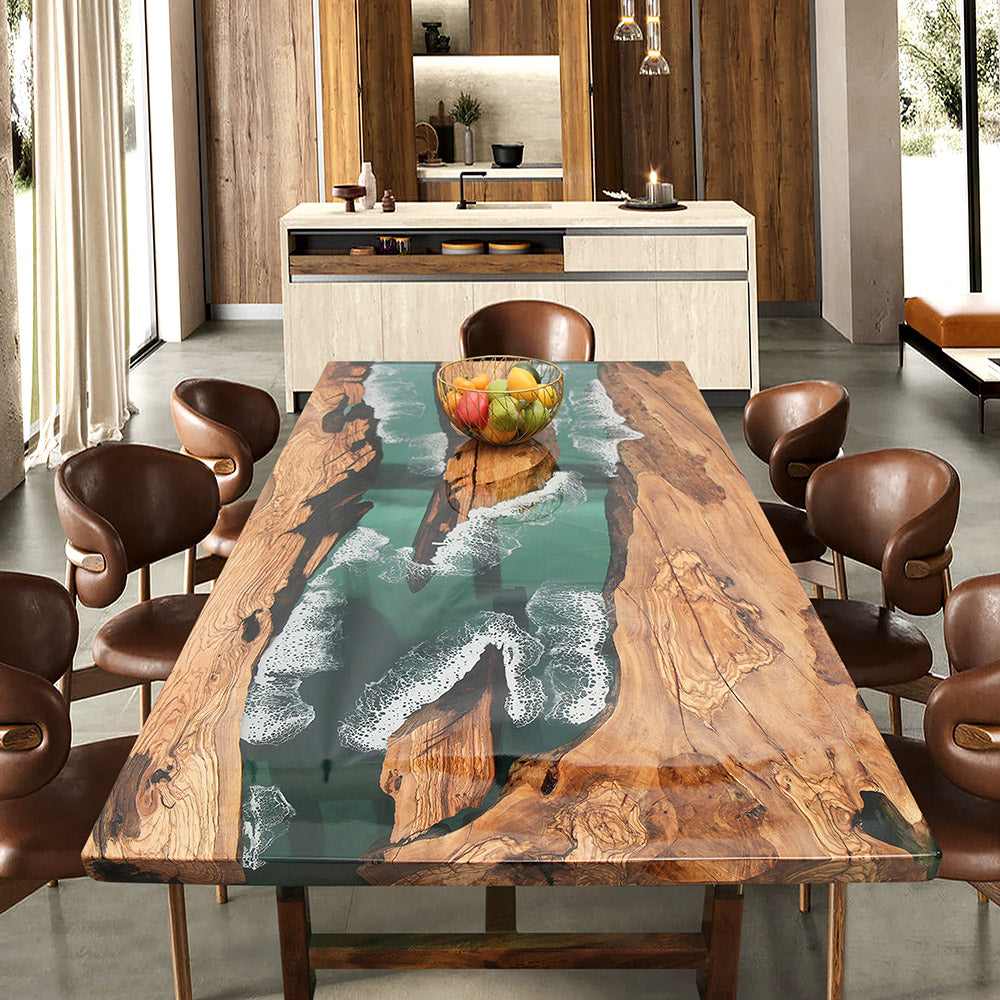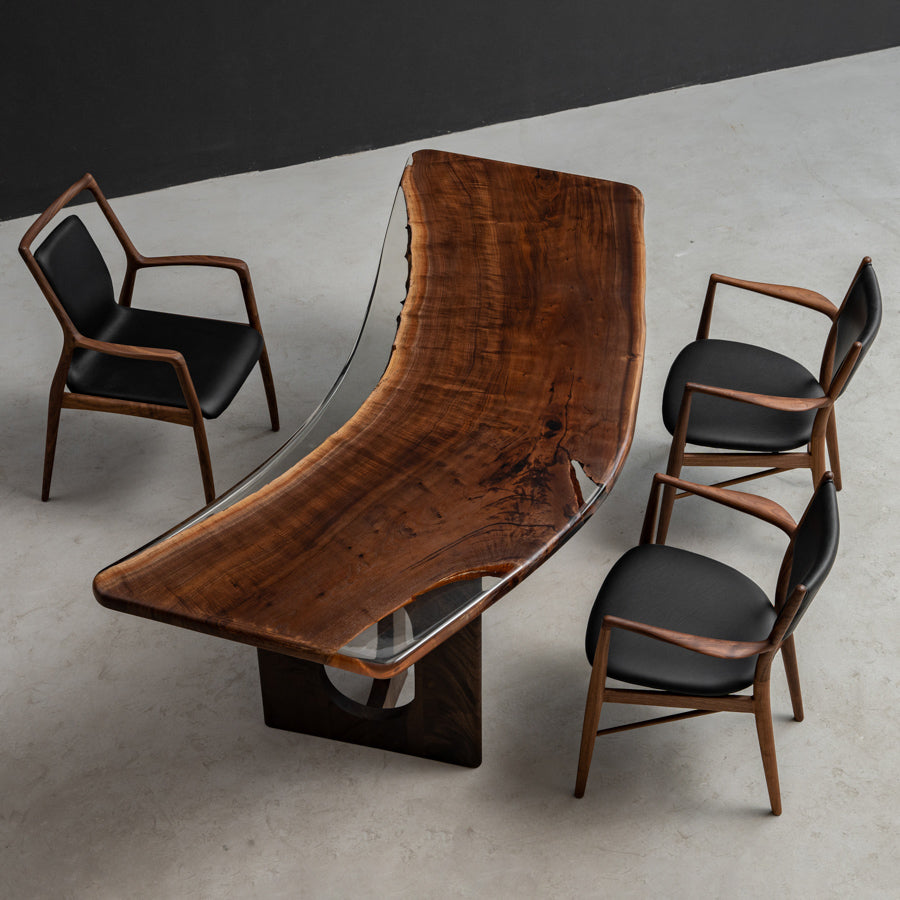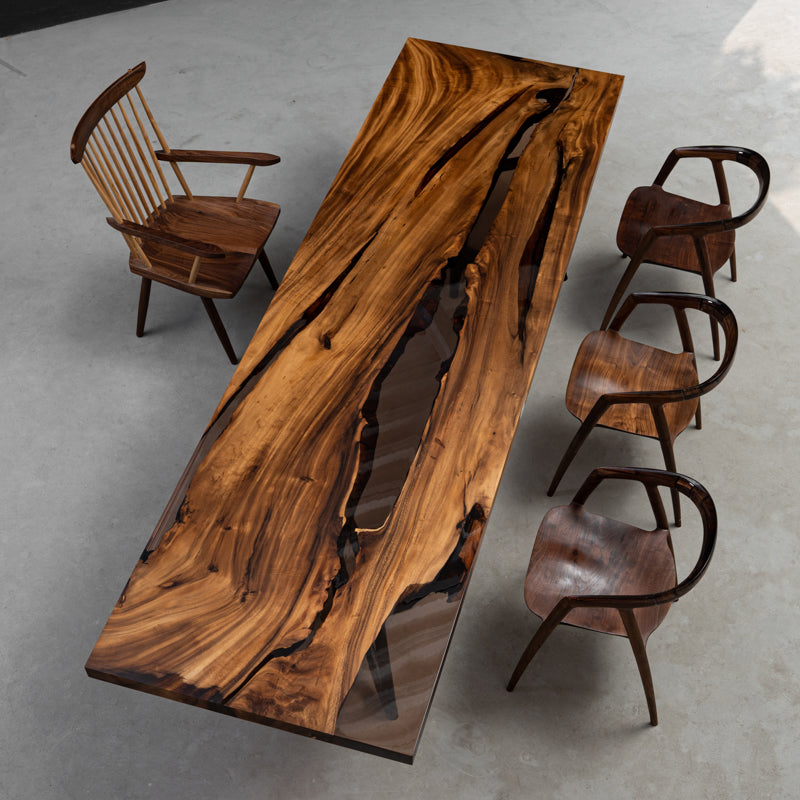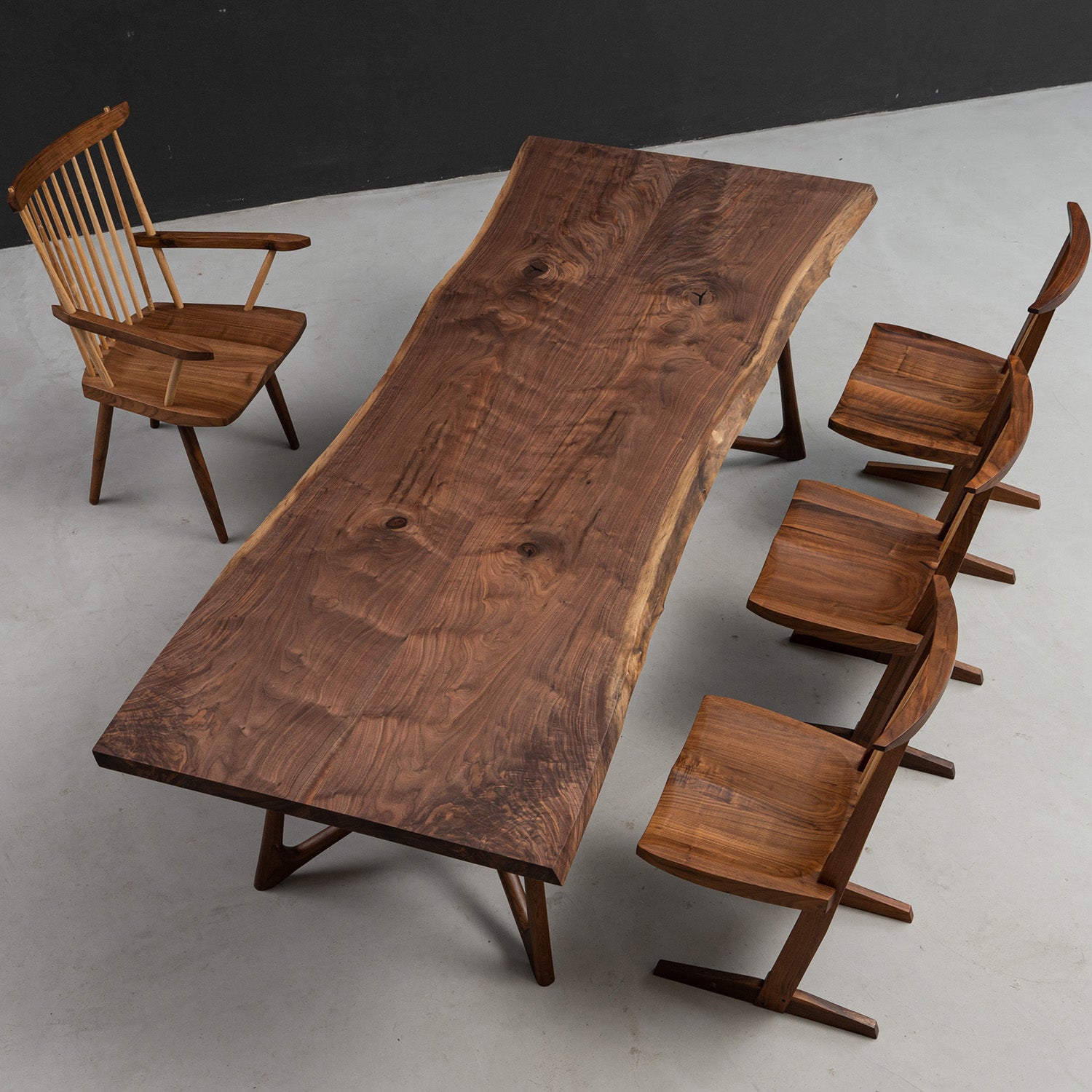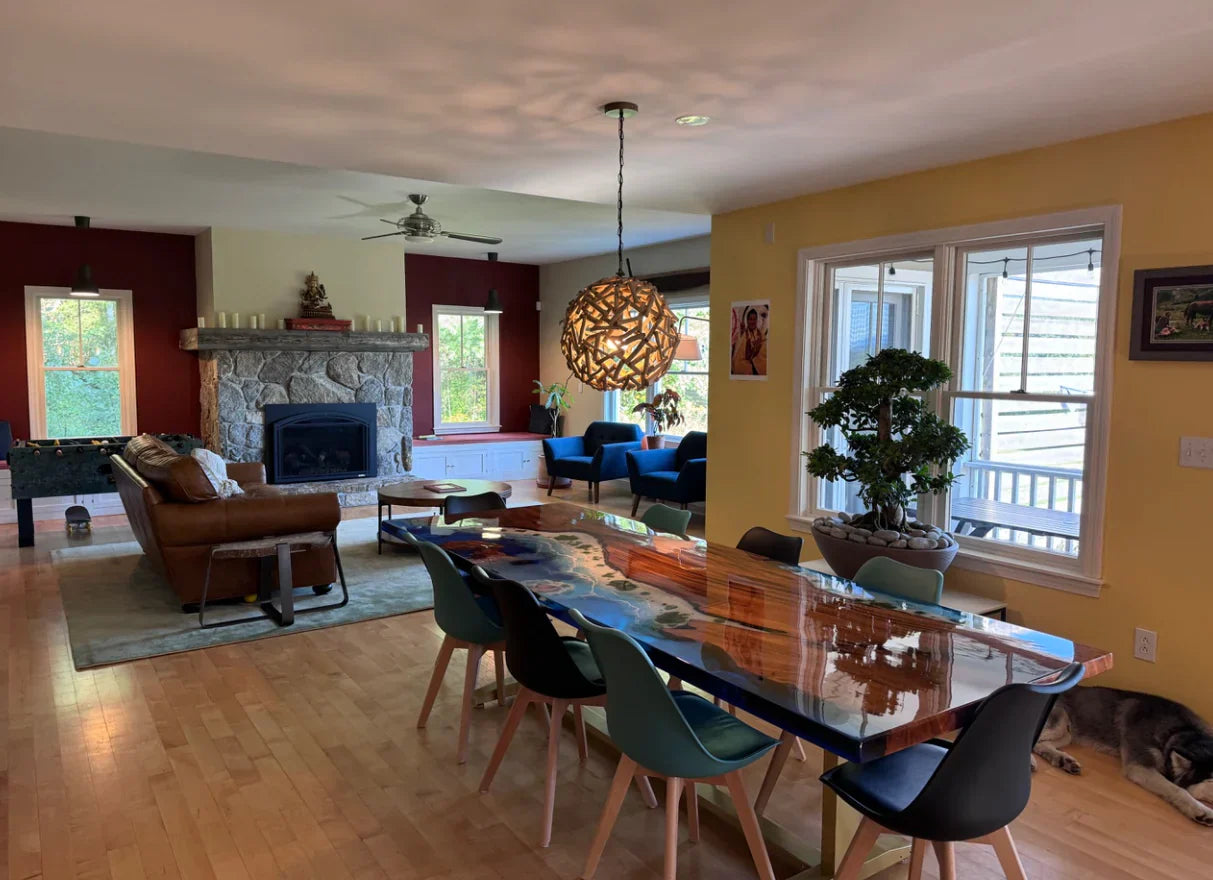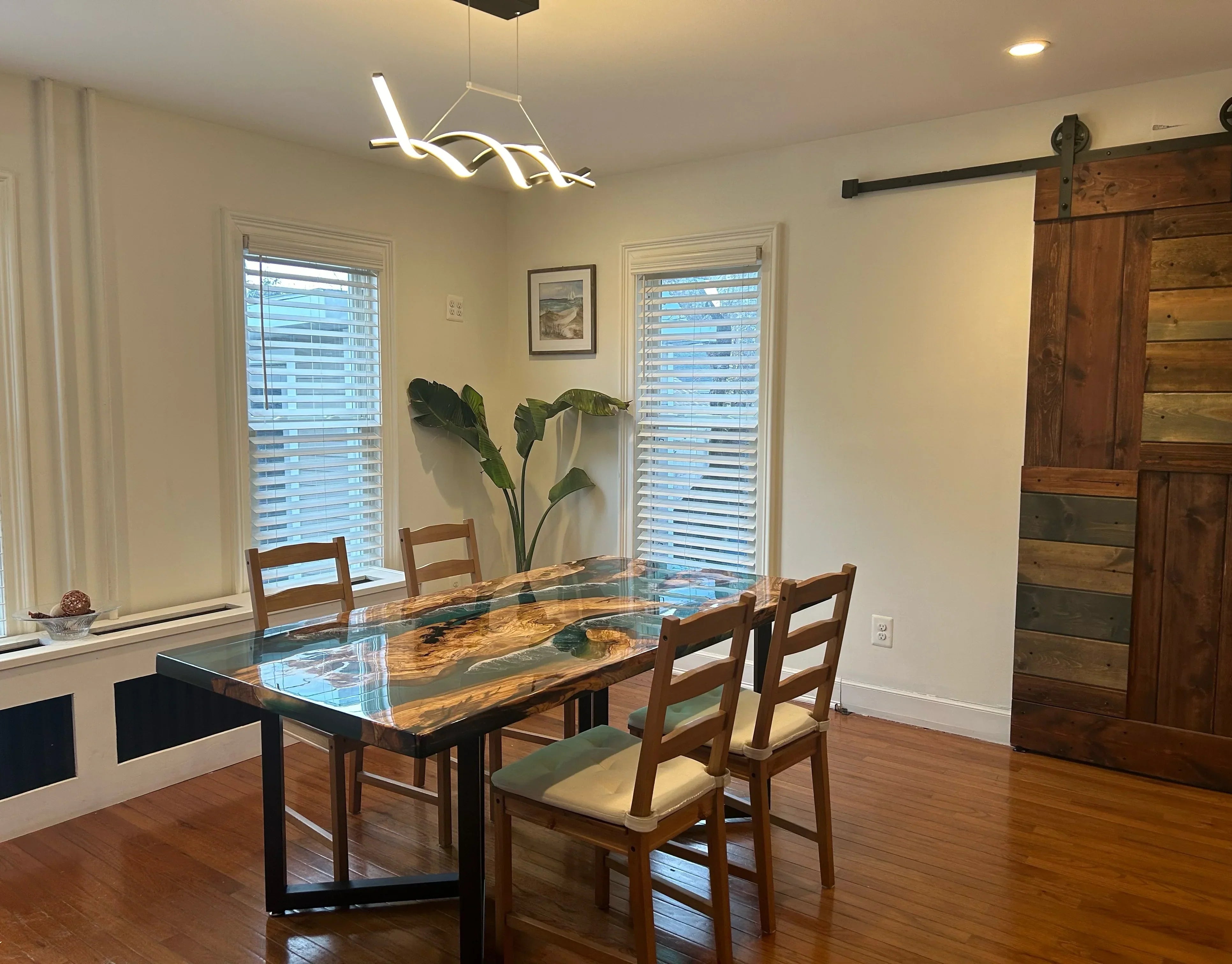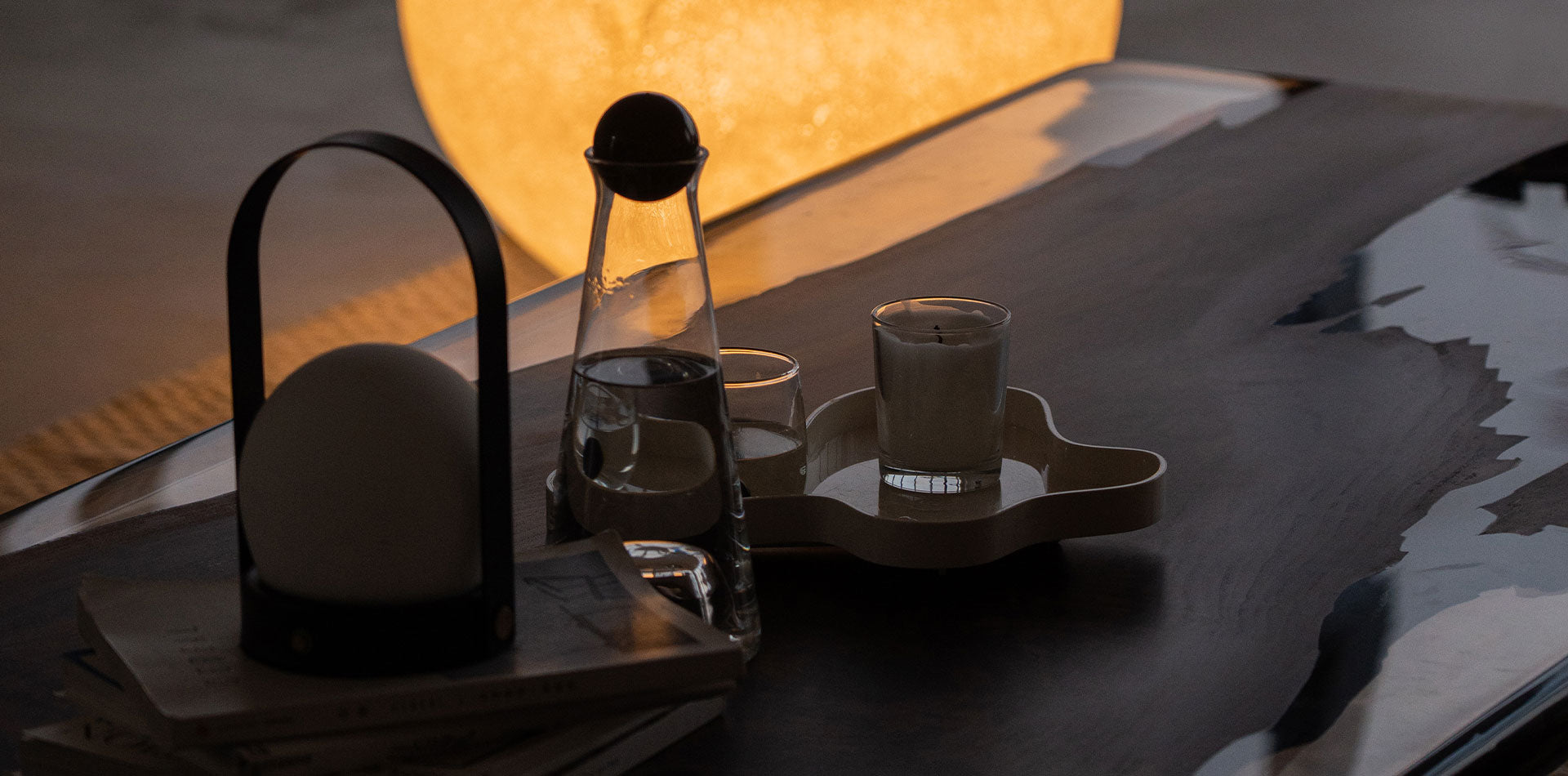I believe that many people have read a lot of guides on the selection of resin colors and wood types when customizing epoxy resin tables, but rarely find suitable professional guidance in the selection of tabletop surface finishing. The surface finishing, a customization point, plays a very important role in the presentation of the final product of the epoxy resin table. Different surface finishing methods will make the epoxy resin table present different appearances.
The following are four main tabletop surface processing methods, hoping to bring you some inspiration and help
Smooth Wood Finish - Smooth Epoxy Finish
The smooth surface treatment requires strict base surface treatment, resin mixing, pouring and curing, grinding and polishing and other processes. Each step requires precise control and rich experience. The high transparency of epoxy resin, combined with exquisite craftsmanship, not only creates a crystal-clear and mirror-smooth desktop effect, but also improves the desktop's wear resistance, corrosion resistance, and ease of cleaning. At the same time, different from matte and carbonized treatments, the biggest feature of smooth treatment is the charming light and shadow reflected by the smooth surface under natural light, which adds a touch of agility and luxury to the entire epoxy resin. Whether it is a modern minimalist style or a retro industrial style, the epoxy resin tabletop smooth finish can be perfectly integrated and become the finishing touch in furniture customization.

Matte treatment reduces the glossiness of the resin surface through fine surface polishing, forming a delicate and soft diffuse reflection effect. This treatment method not only retains the excellent physical properties of epoxy resin, such as wear resistance, corrosion resistance and easy cleaning, but also gives the tabletop a warmer touch and avoids the glare problem that may be caused by long-term use of smooth surface treatment. The matte finish brings a low-key and restrained texture to the epoxy resin tabletop, highlighting a calm and elegant temperament. It makes the tabletop seem to be covered with a layer of gauze, softening the transparency of the resin, and highlighting the natural charm of the wood texture and the delicate changes in color levels. This implicit expression creates a quiet and peaceful atmosphere for the space, which complements the modern simplicity, Nordic style, Wabi-sabi style and other decoration styles that pursue natural simplicity.

This treatment method makes full use of the characteristics of the two materials: the wood part is finely polished and matte treated, retaining the rustic touch of the natural texture, while reducing the surface gloss and avoiding visual fatigue caused by light reflection. While the epoxy resin part presents a crystal clear glossy effect through a high-transparency formula and mirror polishing process, which not only improves the overall strength, water resistance and easy cleaning of the tabletop, but also forms a sharp visual contrast. The warmth and simplicity of matte wood is like the calmness and tolerance of the earth, while the transparency and agility of glossy resin is like the sparkling water. Light flows freely on the glossy resin, refracting charming light and shadow, while matte wood silently carries the traces of time. The combination of matte wood and glossy resin is like a dialogue between nature and technology.

Carbonation is a tabletop treatment technology that partially carbonizes the wood surface through high temperature or chemical means, causing physical and chemical changes in the wood fibers to form a stable carbonized layer. This treatment method not only improves the wood's anti-corrosion, moisture resistance and durability, but also gives it a unique dark tone and texture effect. The carbonized wood presents different shades of black, like an ancient wood stained by time, exuding a vicissitudes and mysterious beauty. The cracks and textures produced during the carbonation process are like the brushstrokes of nature, adding a unique artistic atmosphere to the tabletop. Transparent epoxy resin is usually chosen to match the carbonized wood table.


